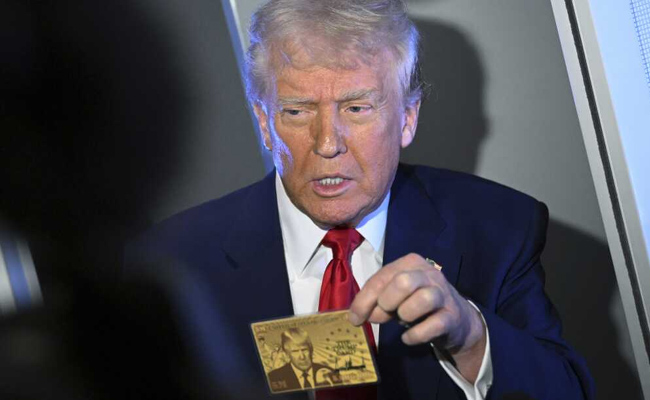
World

Former U.S. President Donald Trump has officially launched the first phase of his much-publicized “Gold Card” project — a dream initiative aimed at raising significant funds for the U.S. economy. As part of the initial rollout, Trump unveiled a new website where interested individuals can register and await approval. The process reportedly involves a thorough background check by U.S. embassies before the Gold Card is issued. The cost? A hefty $5 million per card.
Trump claims that the revenue generated through Gold Card sales will help reduce America’s ballooning national debt, which currently stands at $36 trillion. According to projections by the U.S. Department of Commerce, the government hopes to raise as much as $5 trillion through this initiative. Trump has expressed confidence that at least 500,000 wealthy individuals will purchase the card over the next 7–8 months, which could generate $5 billion in a single day if 1,000 cards are sold.
Analysts say that while the numbers sound impressive, the practicality of the plan is questionable — especially given the recent changes in the card’s terms and conditions.
Initially promoted as a fast-track to U.S. citizenship, the Gold Card no longer guarantees immediate citizenship rights. Applicants will still need to fulfill additional residency and business requirements after obtaining the card. This change has left many prospective buyers disappointed, as full U.S. citizenship remains a key incentive for such investments.
A recent Forbes survey among global high-net-worth individuals revealed a tepid response to Trump’s offer. Many expressed that they have no interest in U.S. citizenship and that American residency is not a necessity for investing in the U.S. economy. Most also pointed out that the Gold Card lacks competitive advantages when compared to similar programs in other countries.
In terms of tax breaks, the Gold Card offers minimal relief. Cardholders are still expected to pay standard U.S. taxes like any other resident. While there may be some leniency regarding offshore assets, the benefits are far less attractive compared to other nations. For example, Saudi Arabia and the UAE offer long-term residency visas with far lower investment thresholds (as low as $505,000) and greater tax incentives. The UAE’s golden visa also provides visa-free travel to 179 countries — a major draw for global citizens.
Experts suggest that golden visa programs generally contribute no more than 0.3% to a country’s GDP. Even in the best-case scenario, the U.S. may be able to shave off only $1 trillion from its debt through Gold Card sales — and that too over a five-year period. With interest on the national debt continuing to accumulate, the actual benefit to the U.S. economy may be marginal at best.
Critics have also raised concerns about the lack of clarity in the program’s structure — especially regarding employment opportunities for American citizens. Without a full policy framework in place, it remains to be seen whether the Gold Card is a legitimate economic strategy or merely a high-stakes PR stunt.
In the meantime, the Trump campaign hopes for a flood of traffic to the newly launched Gold Card website. But expecting billionaires to line up without clear benefits may be more wishful thinking than economic planning.